Ruissalo prepares for winter
The autumn foliage is the clearest indication of the arrival of autumn in Ruissalo’s deciduous and herb-rich forests. The English oak’s leaves dry and turn yellowish brown, but Norway maples, elms and small-leaved limes can have impressive autumn colours. Eventually their leaves fall off as well, and the forest, which was shrouded in a green-tinted twilight in the summer, turns brighter once more.
Ruissalo’s winters are too harsh for many animals, as a result of which they head for warmer climes. Of the species that stay behind, some fall into hibernation while others persist through the winter with the help of accumulated food stores, a warm coat of fur or a sheltered nest hole. The smallest plants winter underground or as cold-resistant seeds. For fungi, the late summer and autumn are a time of plenty, with their fruiting bodies popping up ‘like mushrooms after the rain.’
Unlike other deciduous trees, the common alder sheds its leaves while they are still dark green and seemingly full of life. Why doesn’t it behave like other deciduous trees and store the valuable nutrients contained in the leaves in its trunk for the winter and then recycle them into new leaves next spring? The reason is the common alder’s root nodule bacteria, with the help of which the tree can extract nitrogen from the air. Because of this, it has no need to preserve and recycle valuable nitrogen like other deciduous trees.
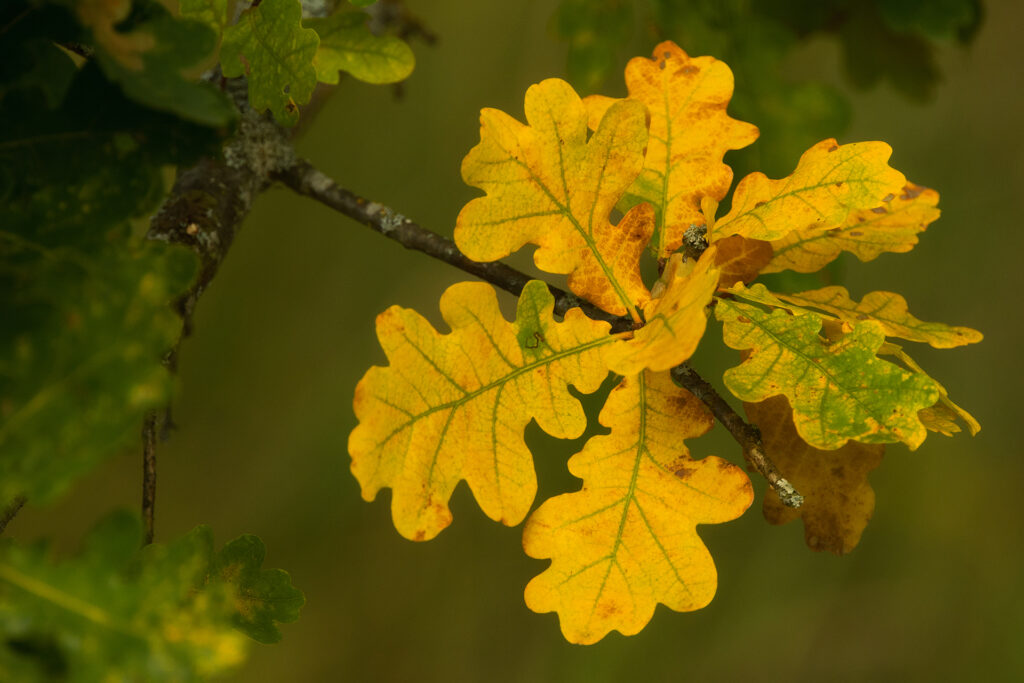
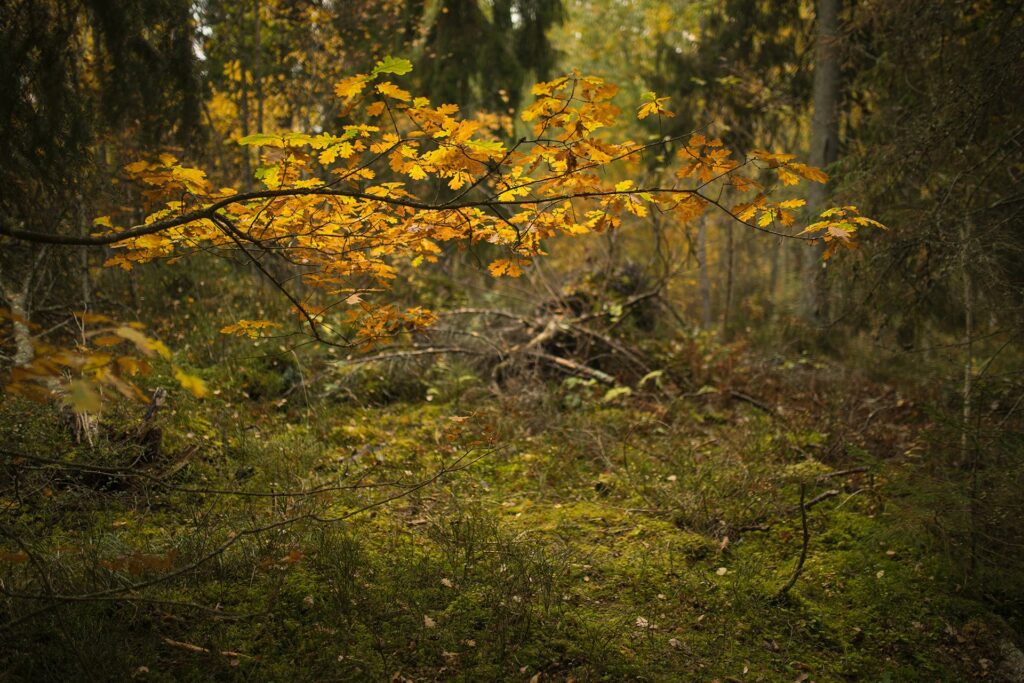
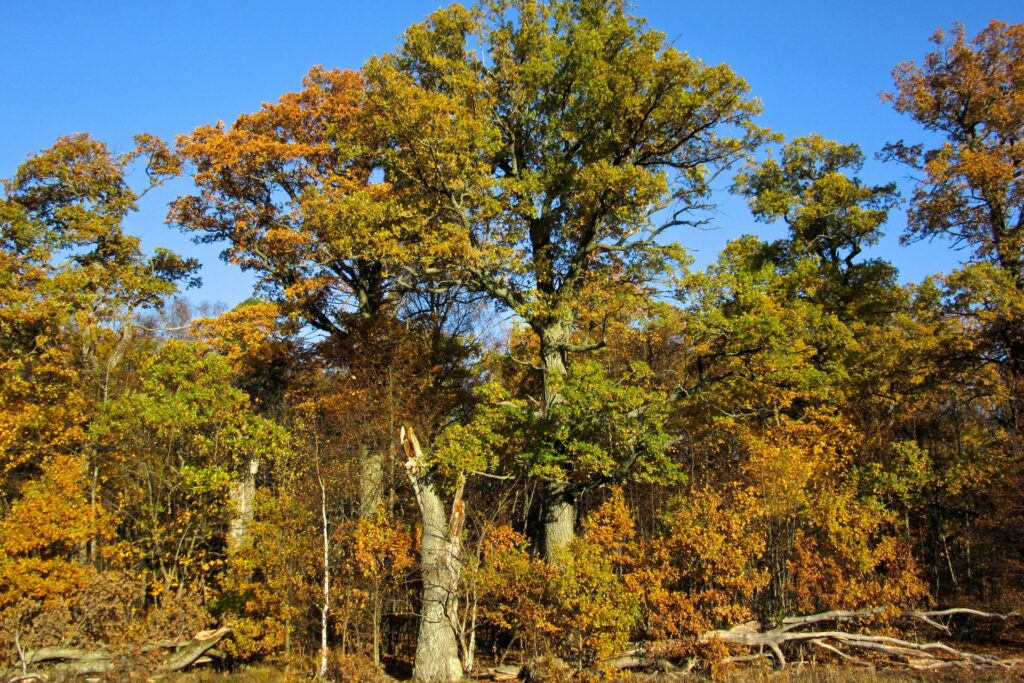
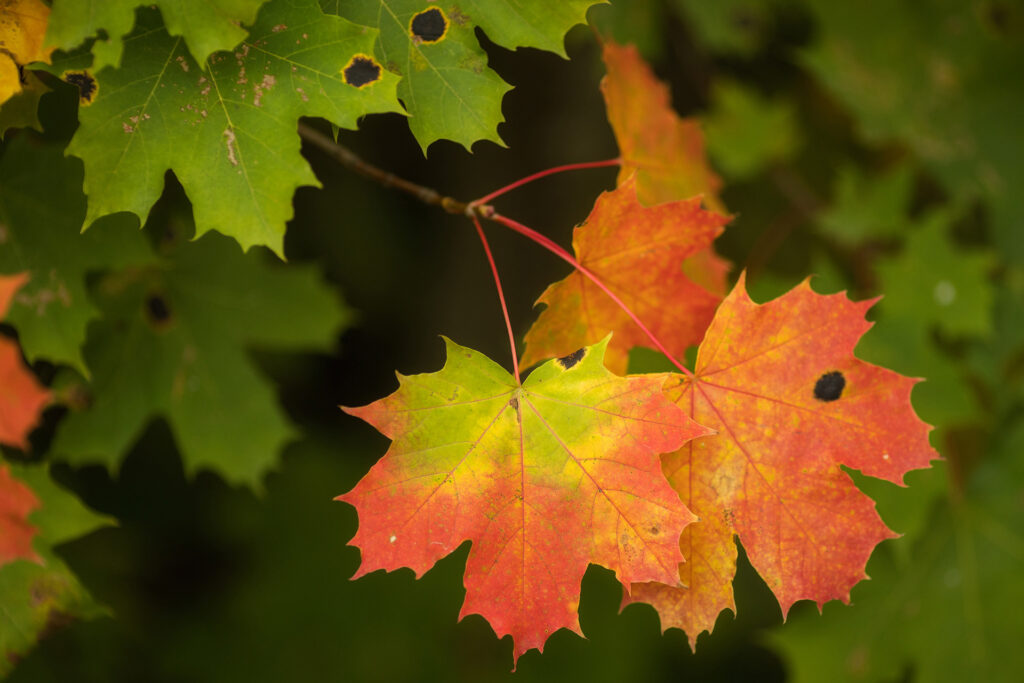
Deciduous trees mark the end of summer with a spectacular display of colours
Autumn foliage is far too modest a term to describe the explosion of colours that takes place on Ruissalo in the autumn, with deciduous trees practically glowing in different shades of yellow, orange and red. The days growing shorter coupled with falling temperatures prompt deciduous trees to start preparing for the coming of winter. To this end they break down the chlorophyll in their leaves and transfer its valuable components into their trunks, where they are stored until next spring. As the green chlorophyll disappears from the leaves, other pigments – carotenoids, xanthophylls and anthocyanins – become visible, with maples, aspen and rowans in particular boasting a wide range of colours before the coming of the dark autumn. On Ruissalo, due to the proximity of the warm sea, the autumn foliage is at its most impressive later than in the rest of Finland, usually in early October.
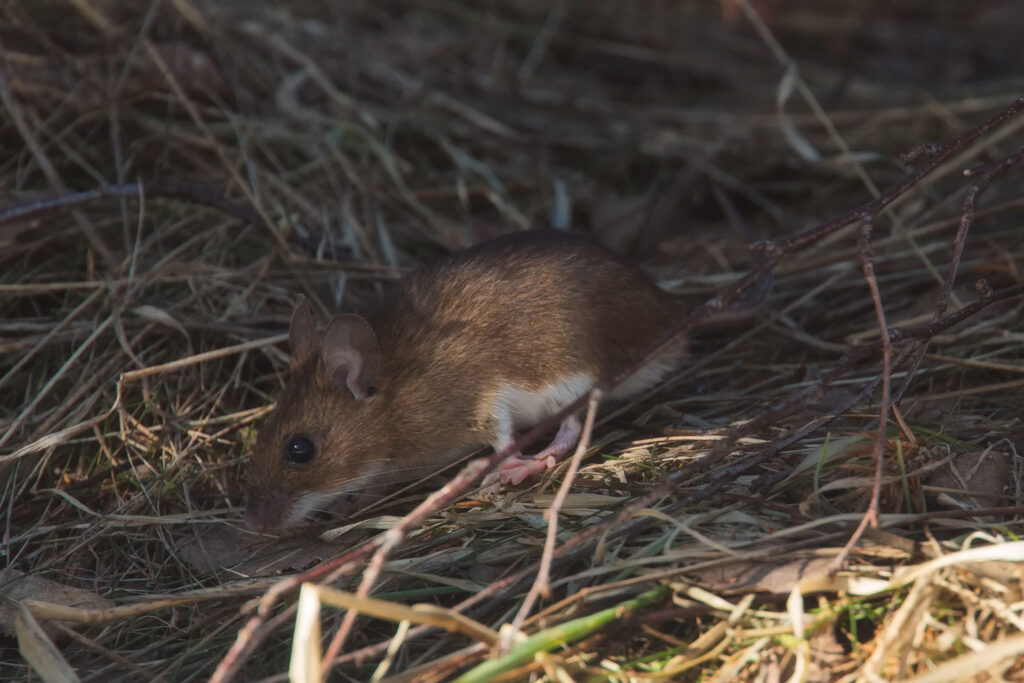
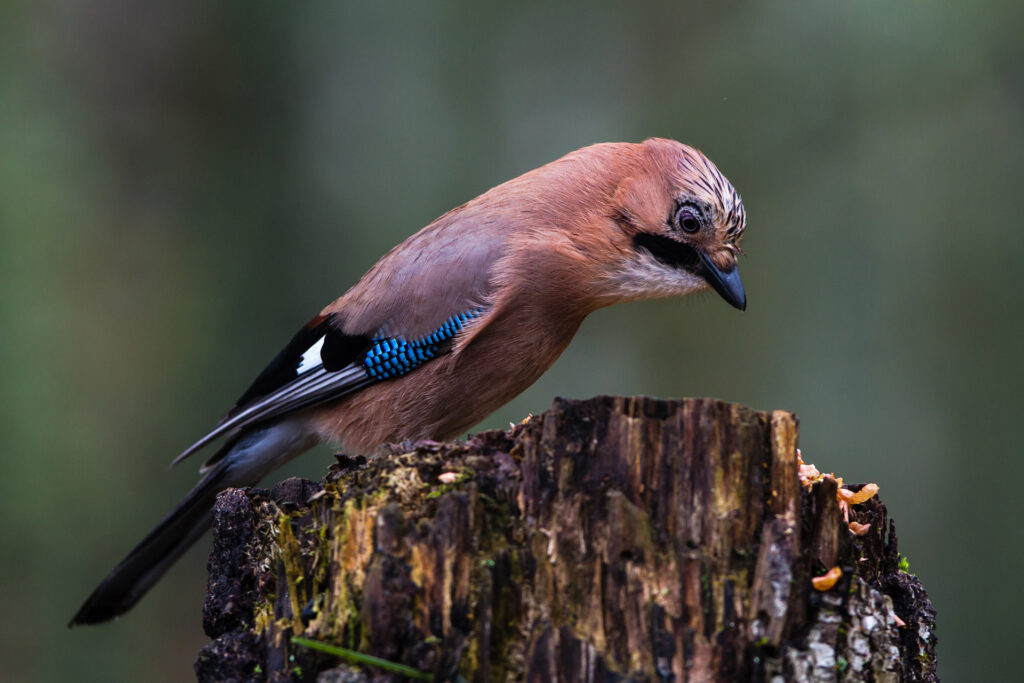
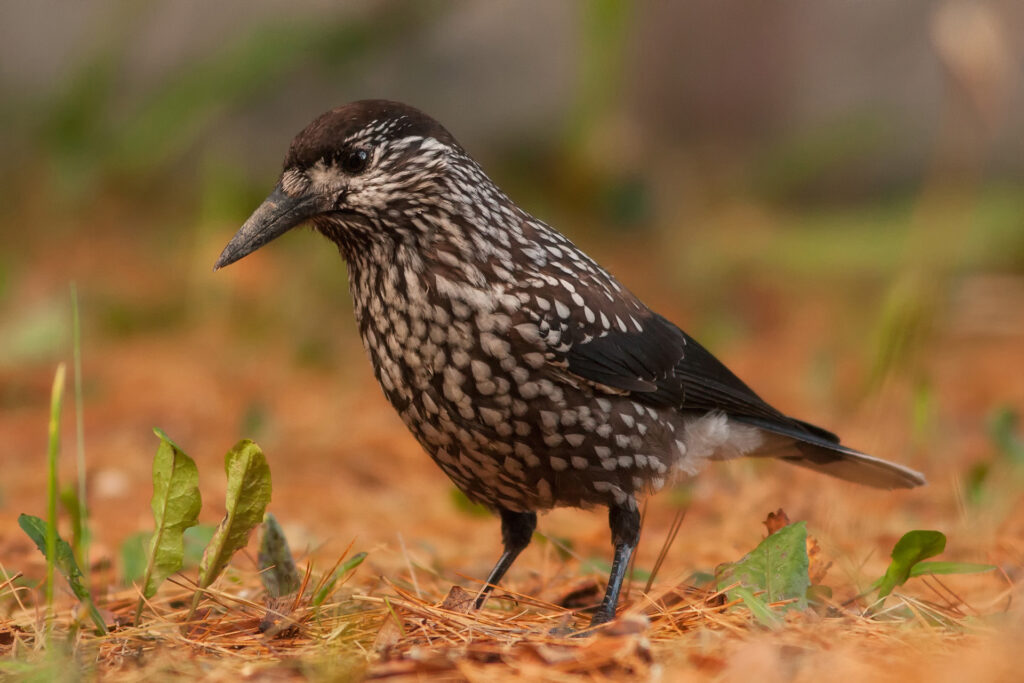
Another species found on Ruissalo that produces plenty of nuts is the English oak – an acorn is a type of nut, after all. The common hazel and the English oak do not grow their nuts for the benefit of animals, however, but for reproduction. Hazelnuts and acorns are their fruit; the hard shells contain a small seed, with the actual nut intended to serve as reserve nutrition for the seed.
Nuts need help reaching new growth sites, which is where birds and small mammals come in. They store thousands of nuts for the winter, but cannot find all of their caches later. This way nuts end up far away from their parent plant, allowing the small acorn or nut to sprout in a new location.
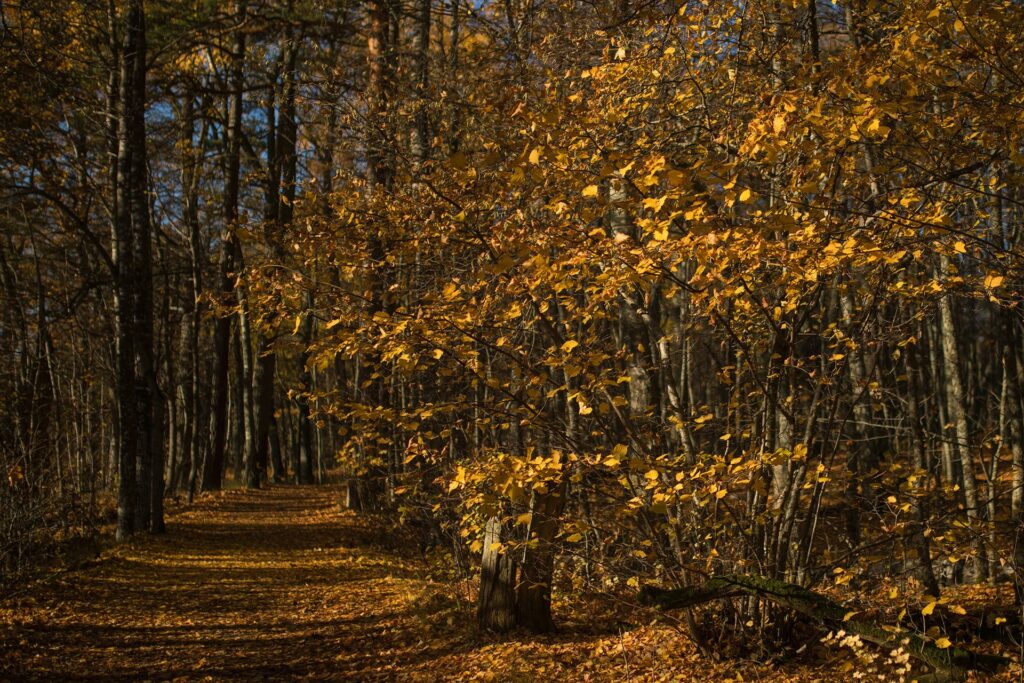
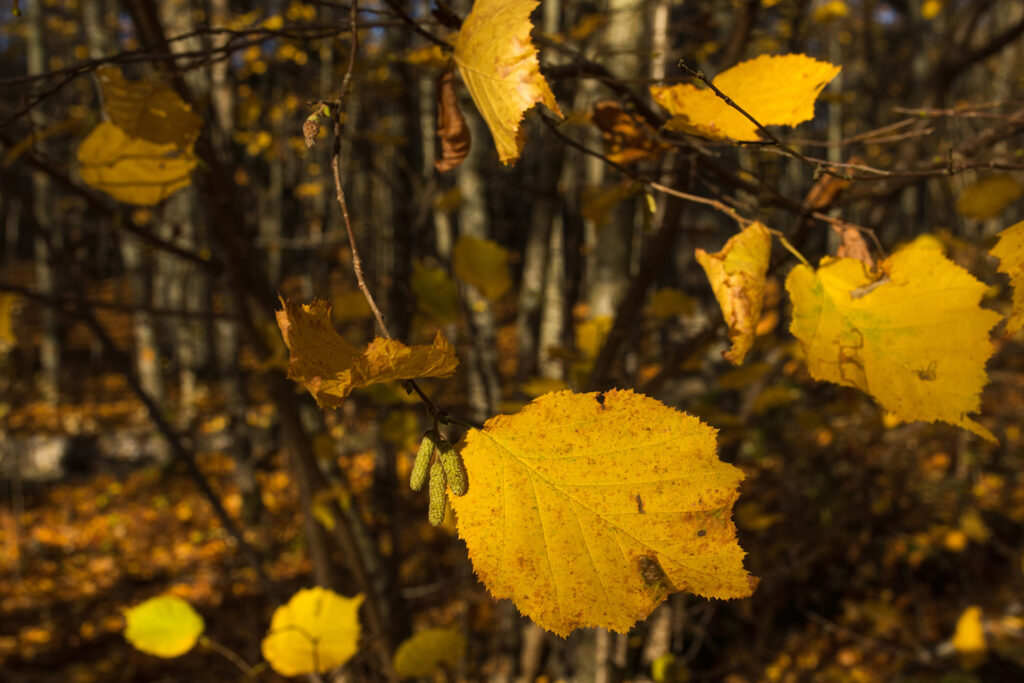
The hazelnut harvest is a lifeline for many – and the harvesters do a big favour while harvesting
The hazelnuts produced by the common hazel growing on Ruissalo ripen in the autumn. This close relative of the plant that produces commercially grown hazelnuts used to be an important food source for humans, but nowadays most of its fatty and protein-rich nuts are eaten by animals. Species that participate in the harvest include squirrels, yellow-necked wood mice, Eurasian jays and nutcrackers, which hide hazelnuts under mosses and the forest litter for winter. Studies have shown that animals remember the locations of their nut caches surprisingly well and can even find them under the snow!
The polypores found on Ruissalo include chicken of the wood, oak mazegill, beefsteak fungus and robust bracket, all of which decompose English oak and are thus quite common on the island. Chicken of the wood (Laetiporus sulphureus) is a bright yellow, impressive polypore, which often penetrates into oaks via splits in branches. Chicken of the wood is annual, meaning that it grows new fruiting bodies on the side of the tree every year. Over time, the fungus’s decomposing hollows out the tree trunk. Oak mazegill (Daedalea quercina) is a perennial polypore that grows in oak stumps, on the trunks of fallen trees and in the dead branches of still living trees. The species is easy to identify by its maze-like gills. Beefsteak fungus (Fistulina hepatica) is a big, soft, dark red polypore with a slimy or leathery surface. It is an annual fungus that usually grows at the base of the oak tree. Robust bracket (Phellinus robustus) is a perennial polypore that grows on oak trees. Its large, up to 15 cm thick, hard and bumpy fruiting body has a cinnamon-brown underside. Polypores play a key role in increasing the biodiversity of the forest, as the decaying wood that they produce serves as homes and food for a wide range of creatures.
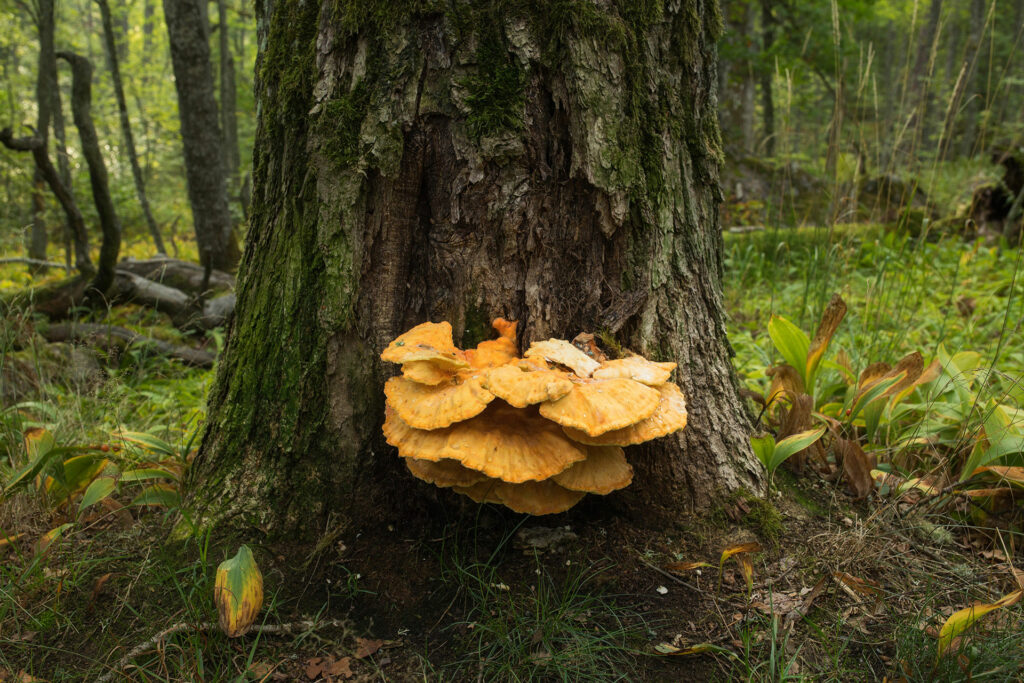
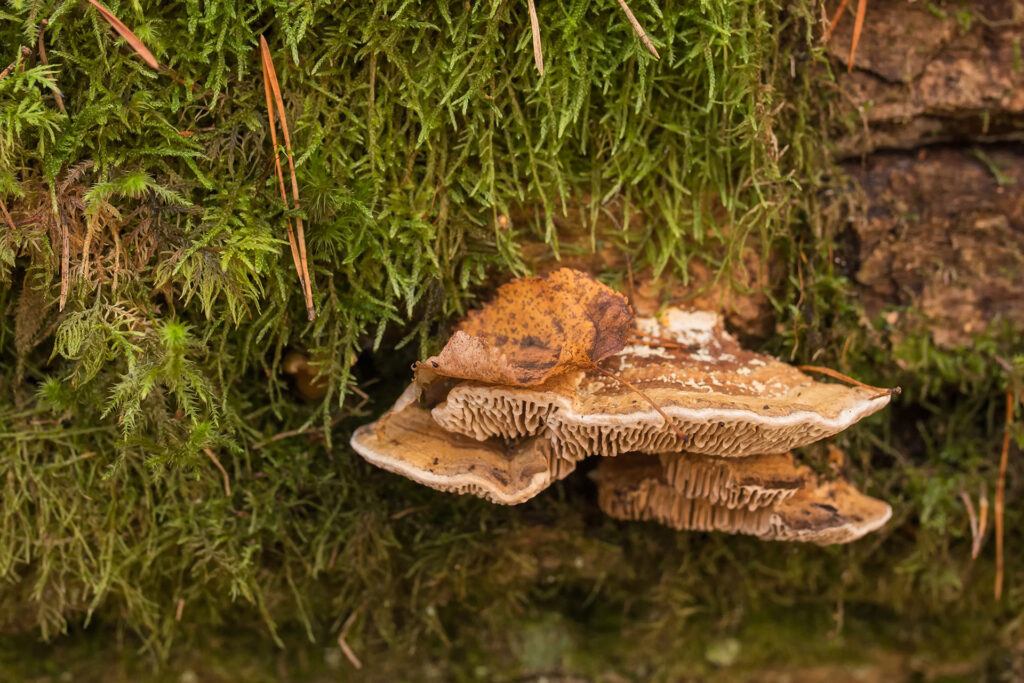
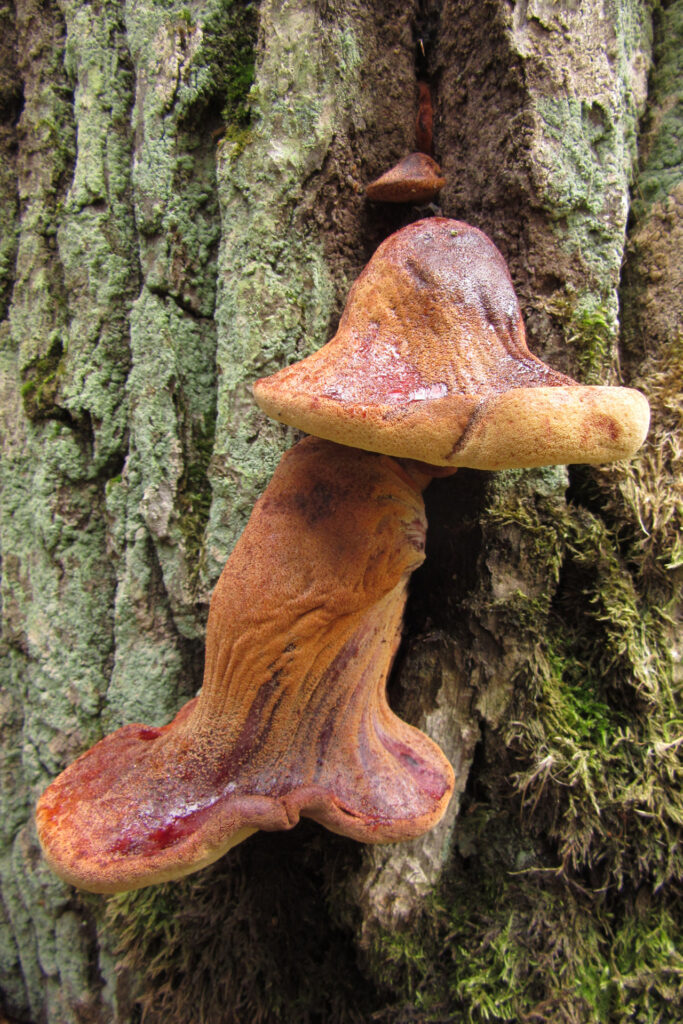
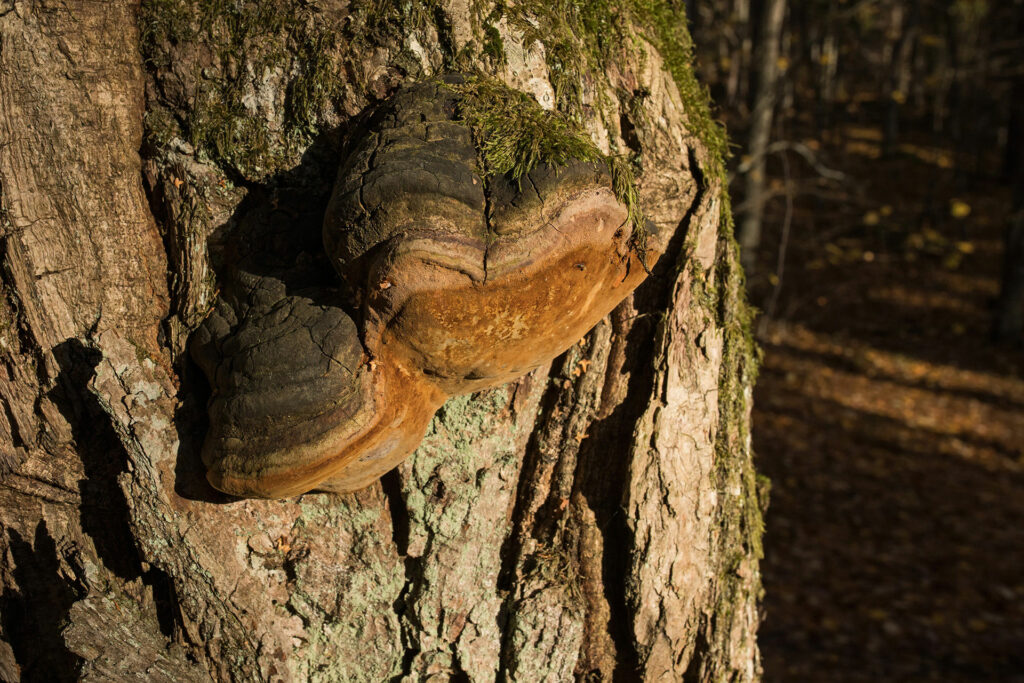
Polypores hide inside trees until it is time to reproduce
Polypores are Basidiomycota fungi, the mycelium of which often grows inside tree trunks, hidden from prying eyes. The mycelium decomposes dead or dying wood and slowly recycles the nutrients within, making them available to other plants. From time to time, the mycelium will grow a fruiting body on the surface of the trunk, which is the fungus’s reproductive structure. Its purpose is to produce spores that are released into the air and spread by winds to new growth sites.
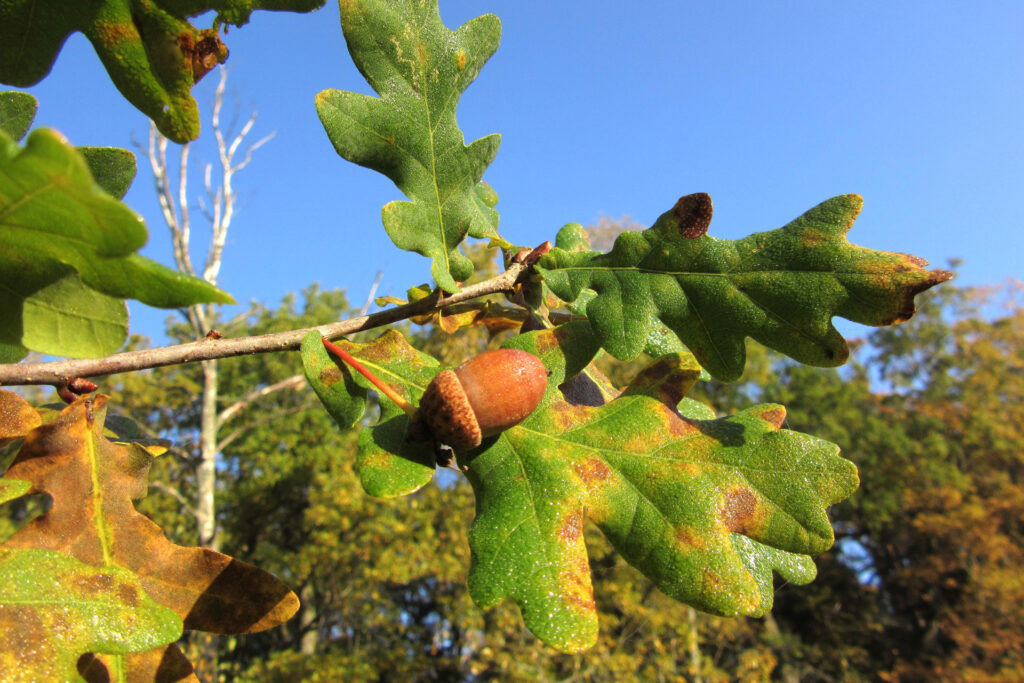
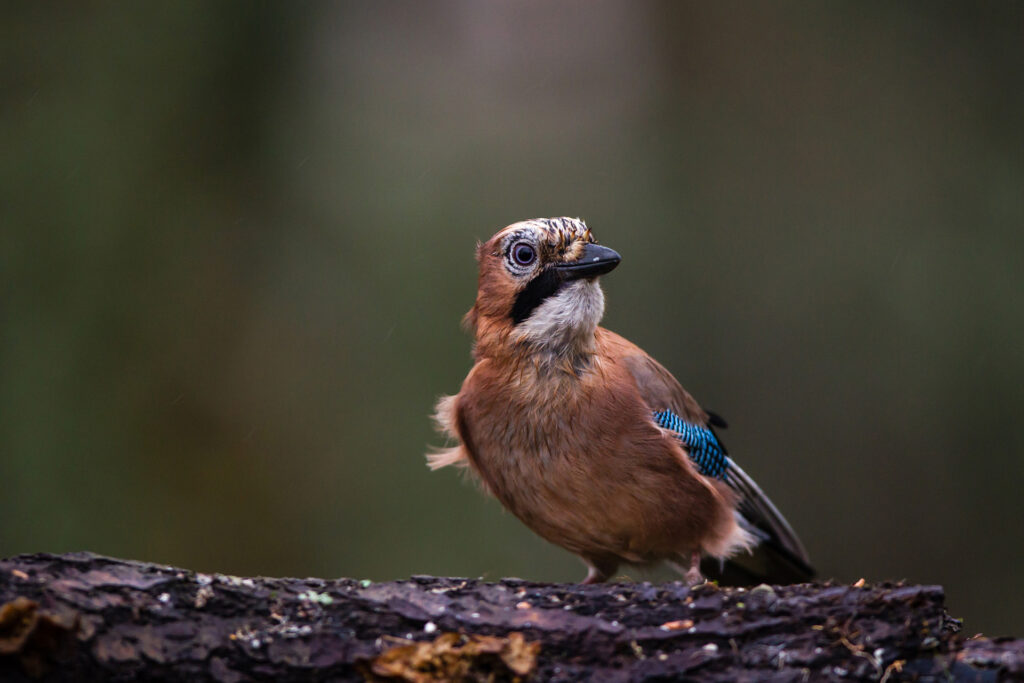
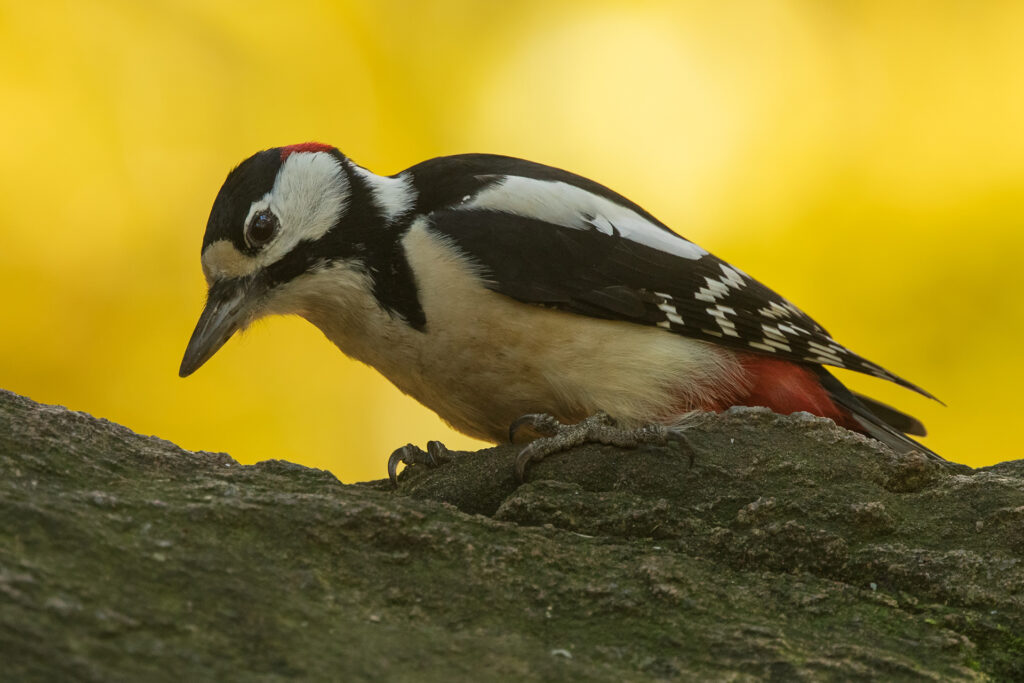
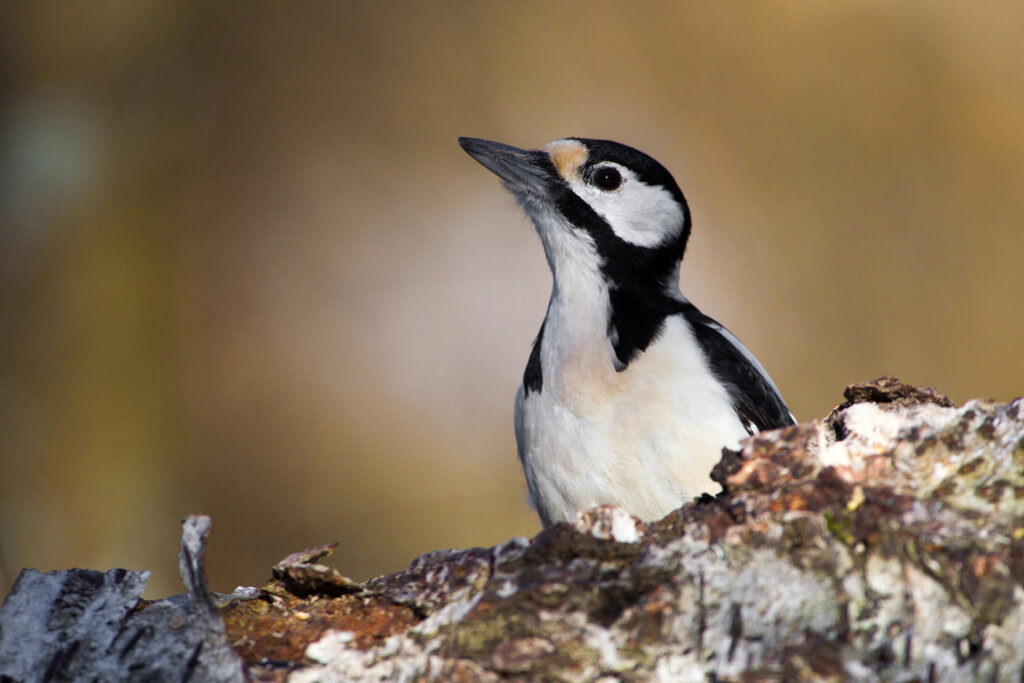
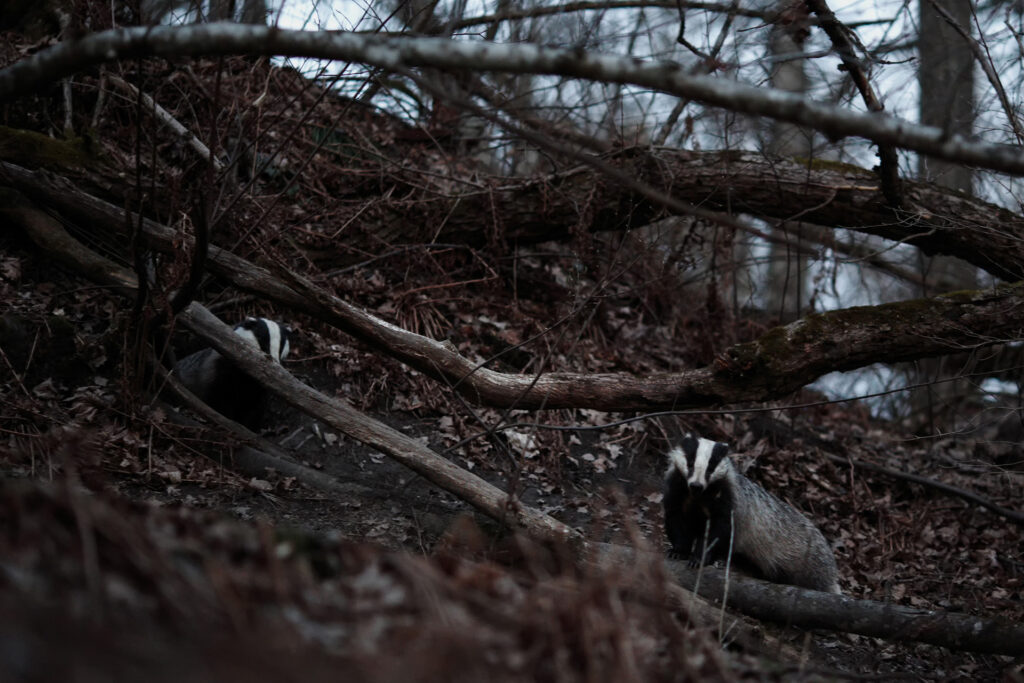
Acorns and hazelnuts attract squirrels, Eurasian jays and small rodents racing to amass as much food as possible in their winter stores. Woodpeckers peck holes in tree trunks to get to the invertebrates hiding within, roe deer strip wilting plants of what edible parts are left and badgers dig around in the forest litter for something to eat. The forest feeds its inhabitants even when leafless!
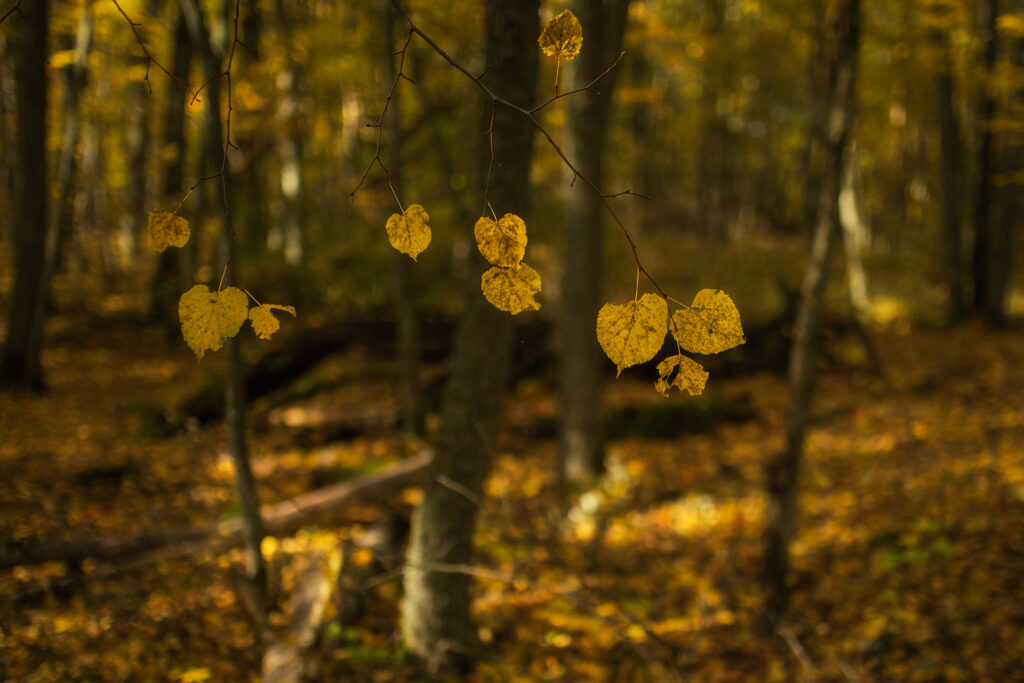
Autumn foliage, recycling and harvest
As plants transfer their valuable chlorophyll from leaves to trunks and stems, hikers get to enjoy the resulting colourful autumn foliage. Eventually the trees drop an enormous quantity of leaves on the ground. This organic matter is utilised by fungi and other decomposers, which recycle the nutrients within, making them available to plants once more. The work carried out by decomposers is silent and discreet, but absolutely vital!
Starting in late September and by October, bats start seeking out their wintering spots. They may still fly around on warm nights, but by this time they are already spending longer periods in light hibernation. Bats relocate throughout the autumn, often waiting until the lowest sub-zero temperatures before moving to their final wintering places.
Of the 13 bat species found in Finland, nine have been found on Ruissalo. The northern bat, the Daubenton’s bat, the whiskered bat, the Brandt’s bat and the brown long-eared bat are all common to varying degrees on the island. The Nathusius’s pipistrelle also breeds on Ruissalo nowadays, but the common noctule and common pipistrelle are rare visitors to the island. However, the star of the bats of Ruissalo is the rare and endangered Natterer’s bat, which in Finland is regularly found pretty much only in Turku.
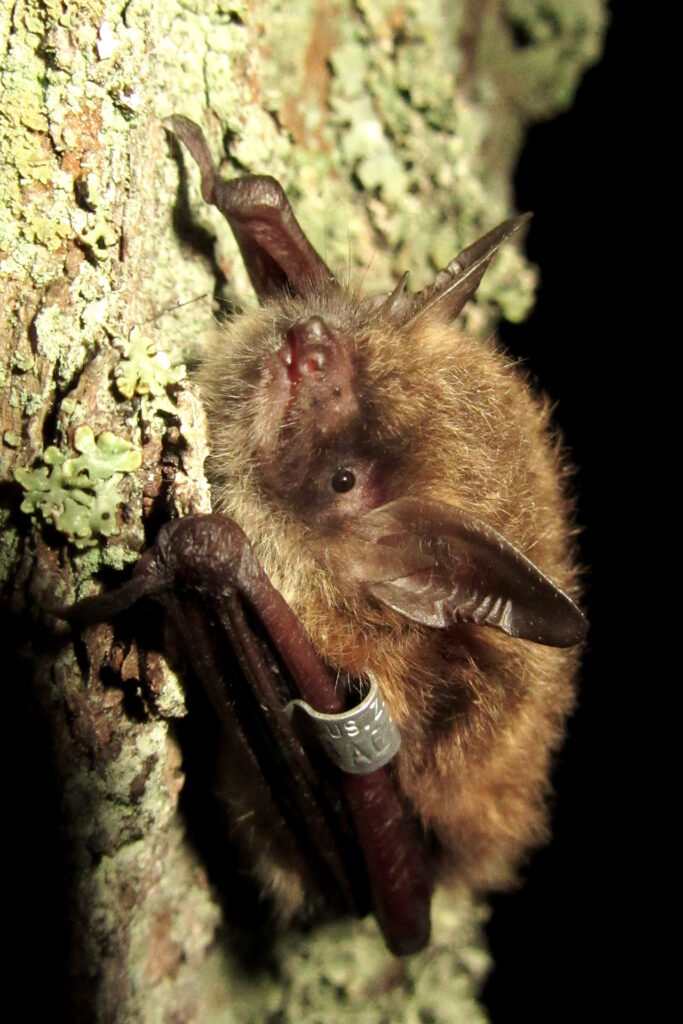
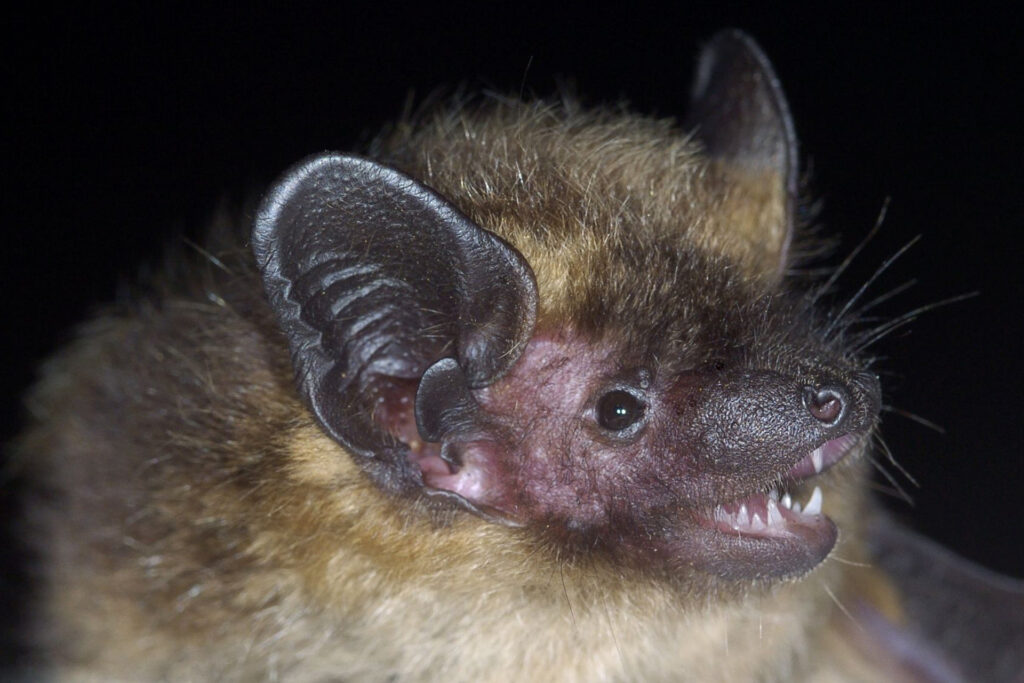
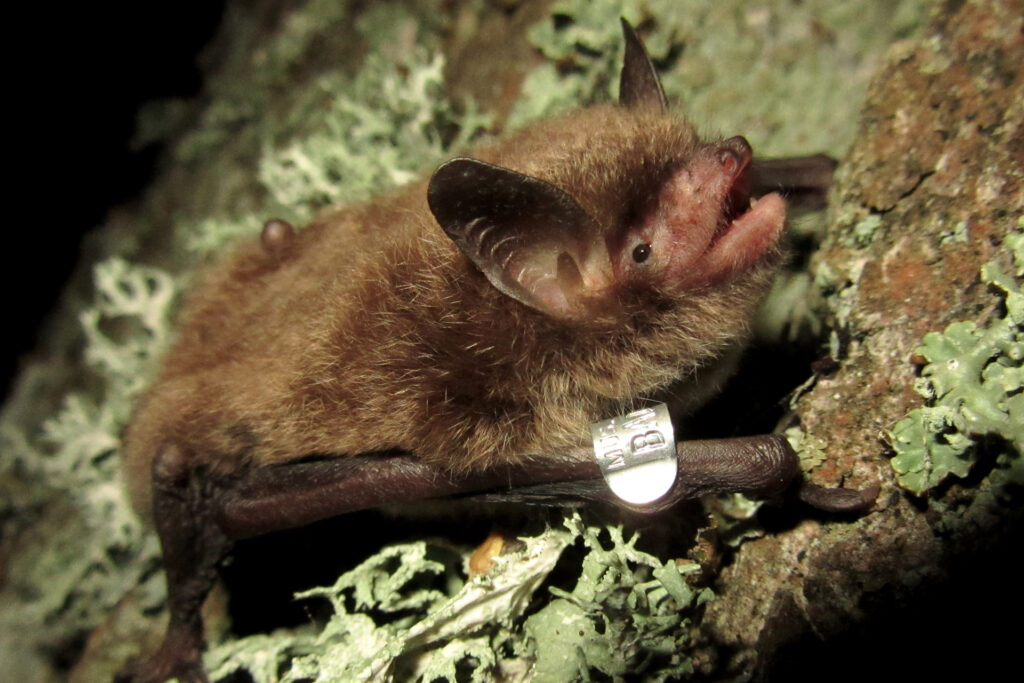
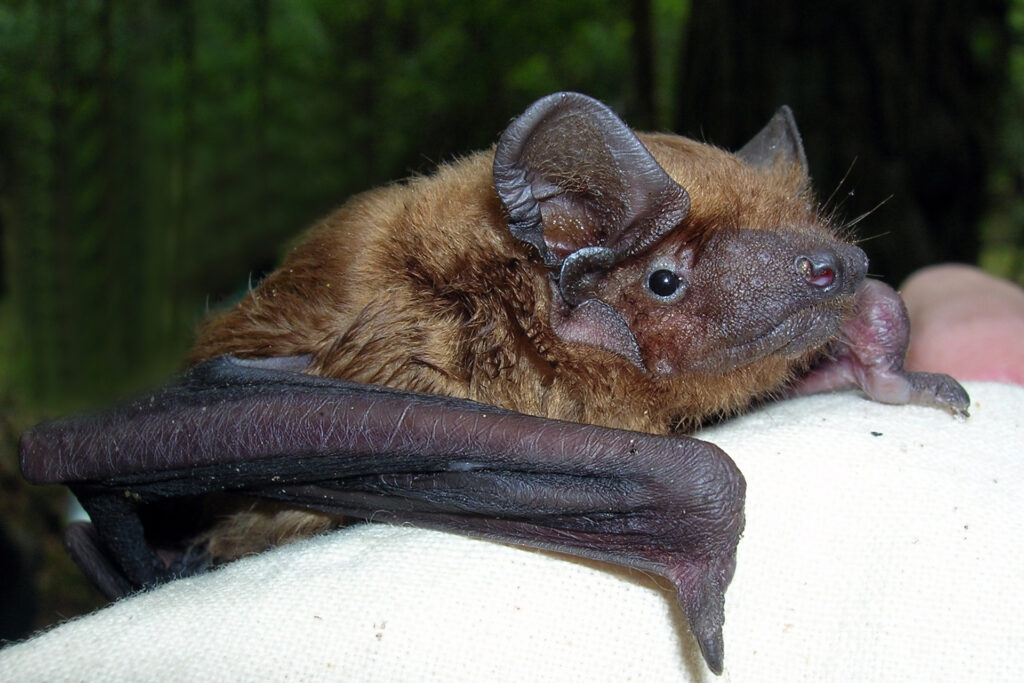
The bats of Ruissalo: The nights grow longer
In late summer, bats focus on thinning out Ruissalo’s diverse range of insects and spiders, accumulating fat for the coming winter. Autumn is also the bats’ mating season. Migratory bats, such as the Nathusius’s pipistrelle, start their autumn migration at the turn of August and September.


